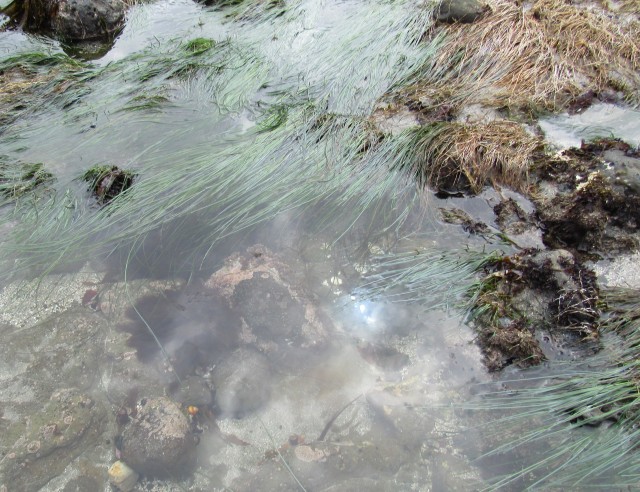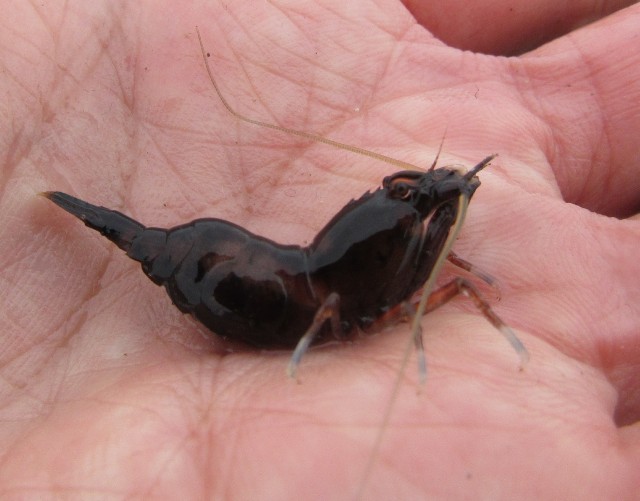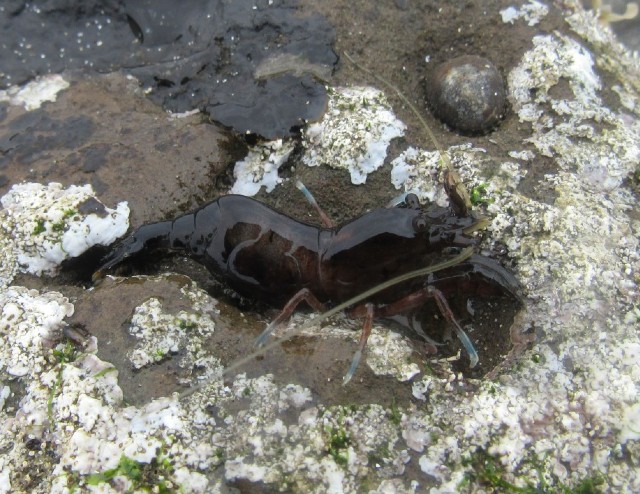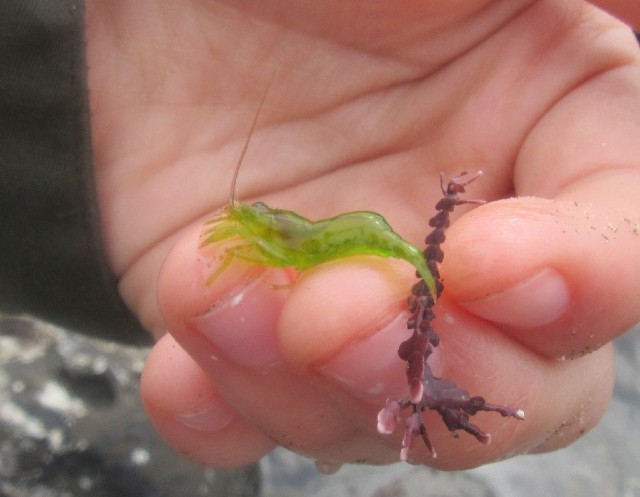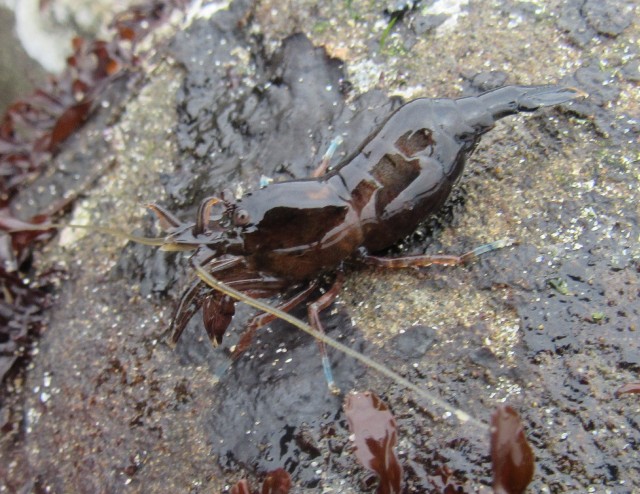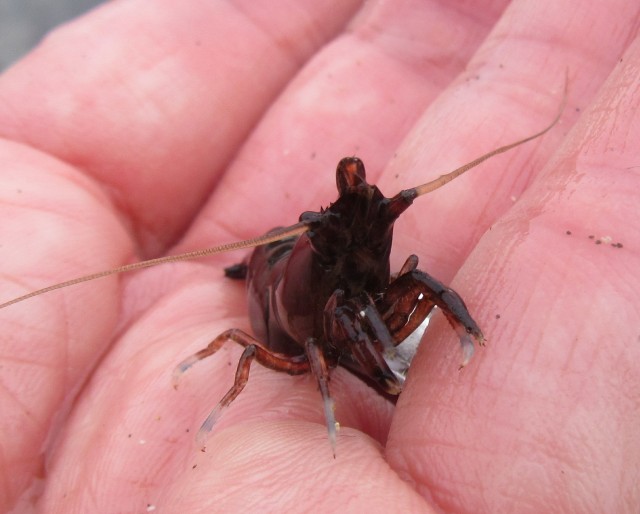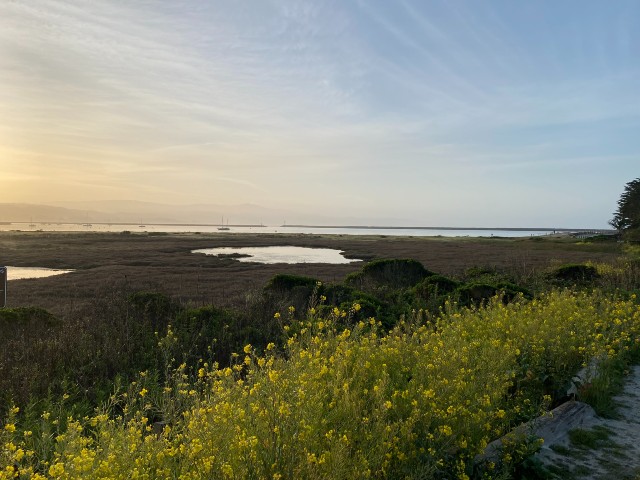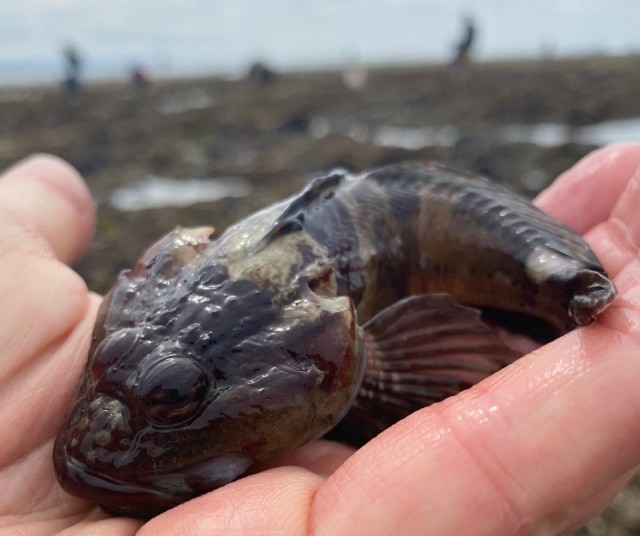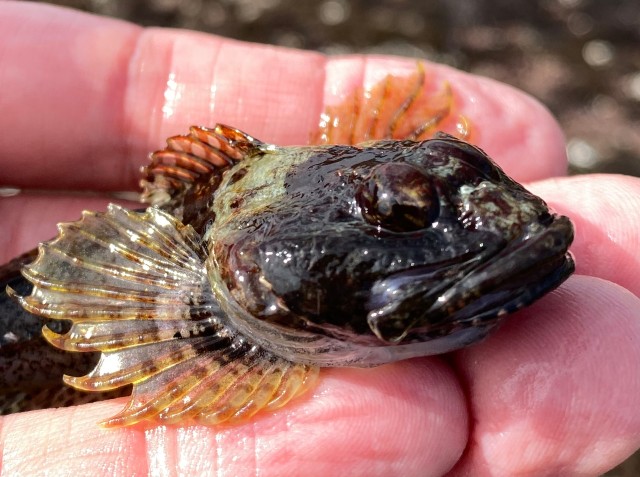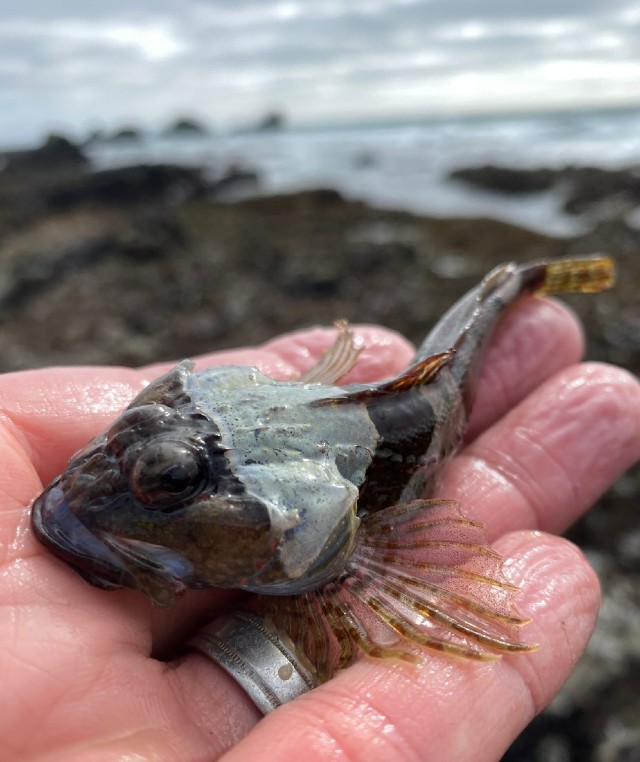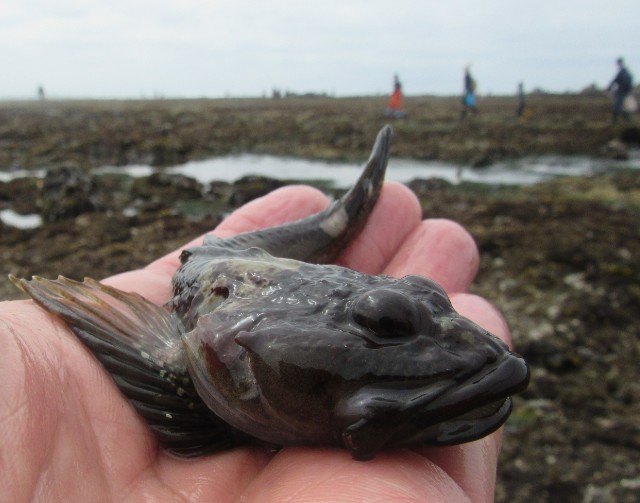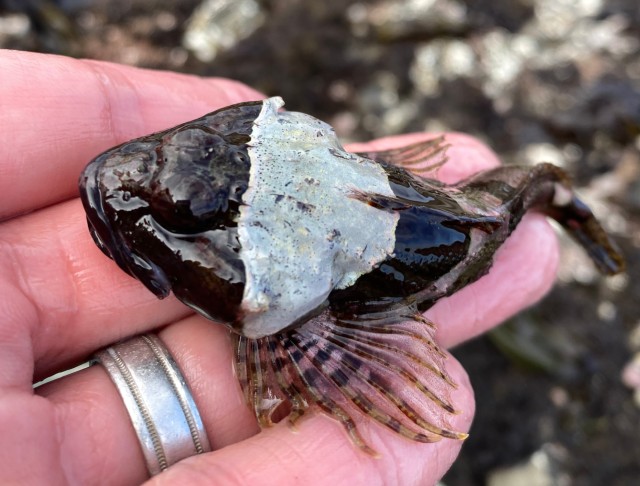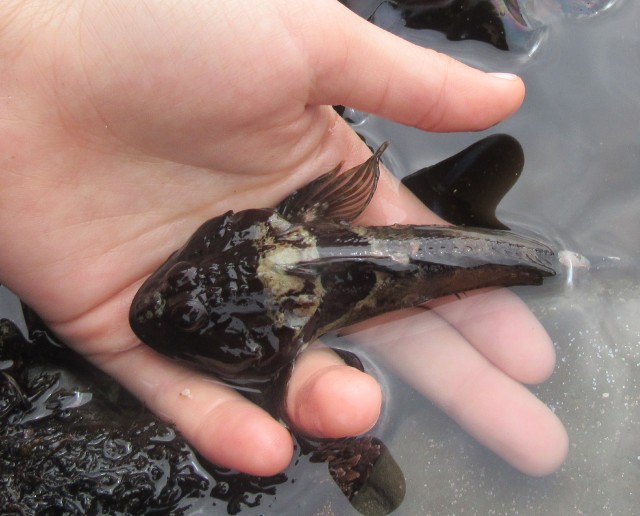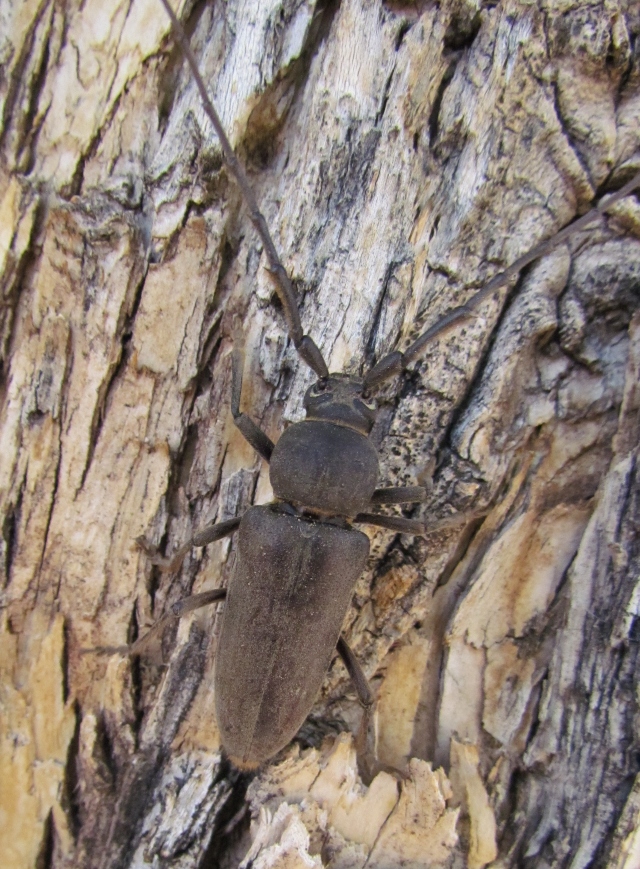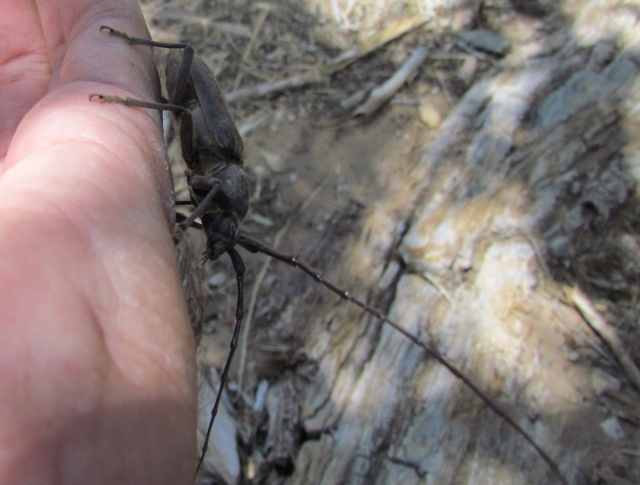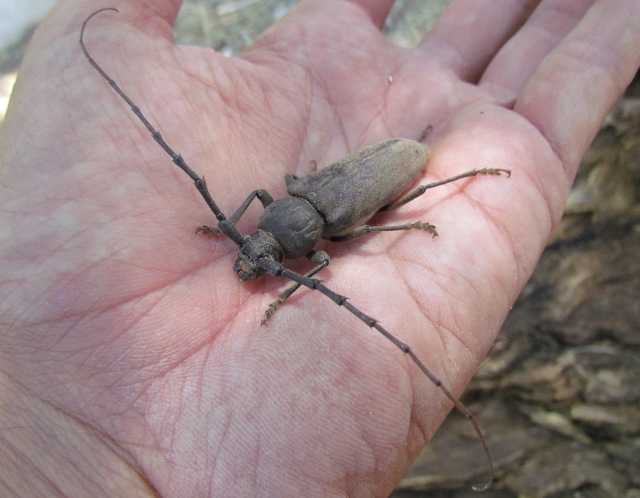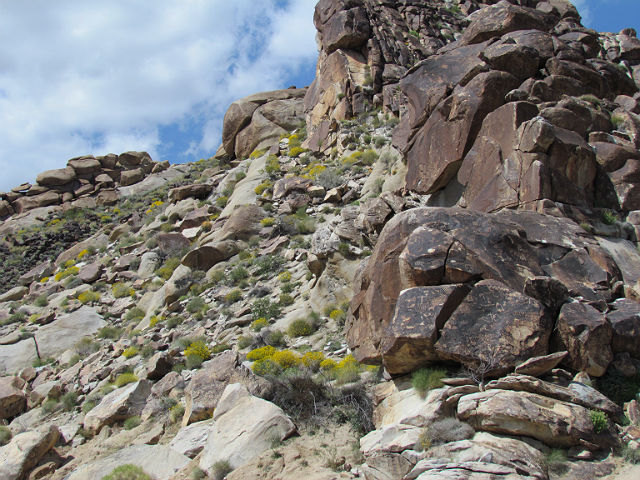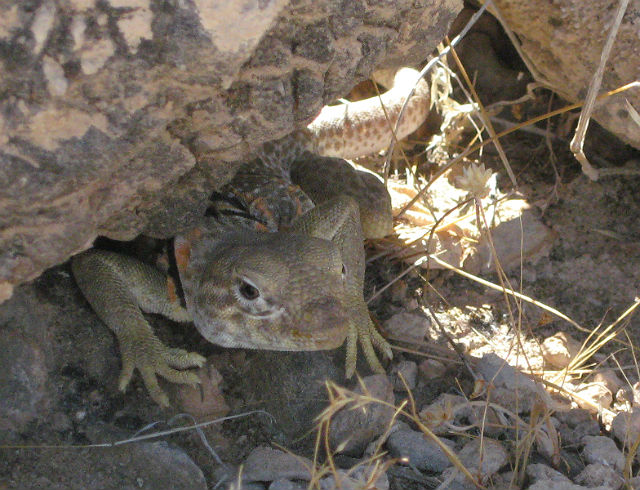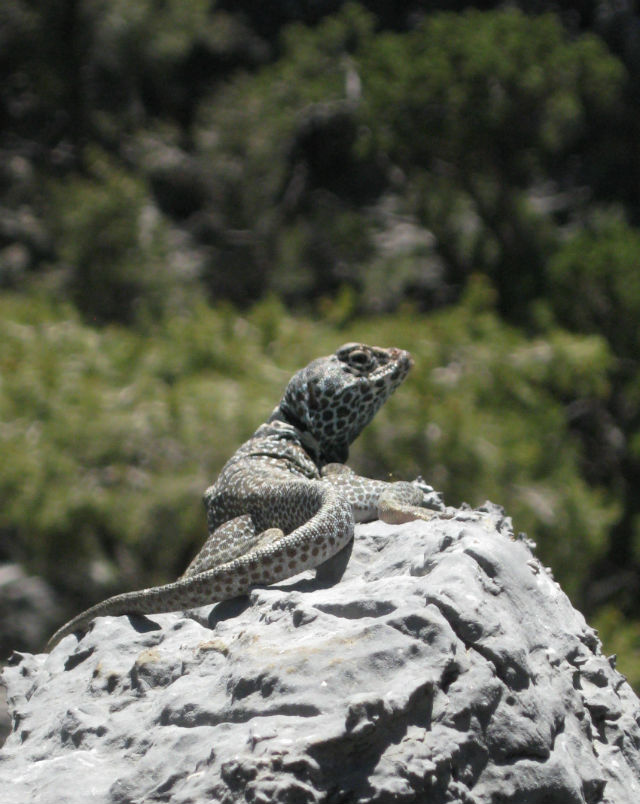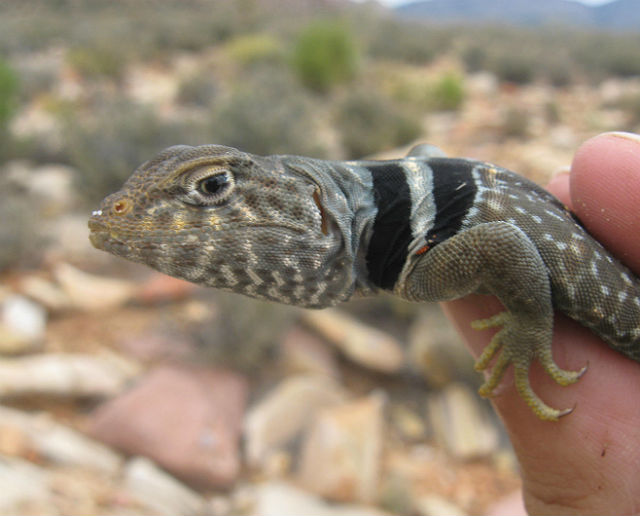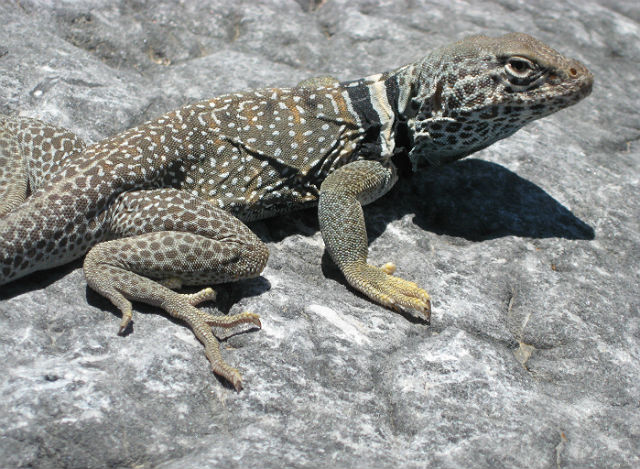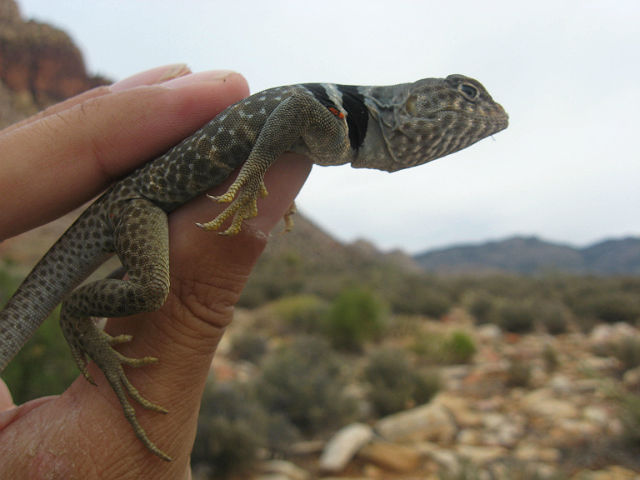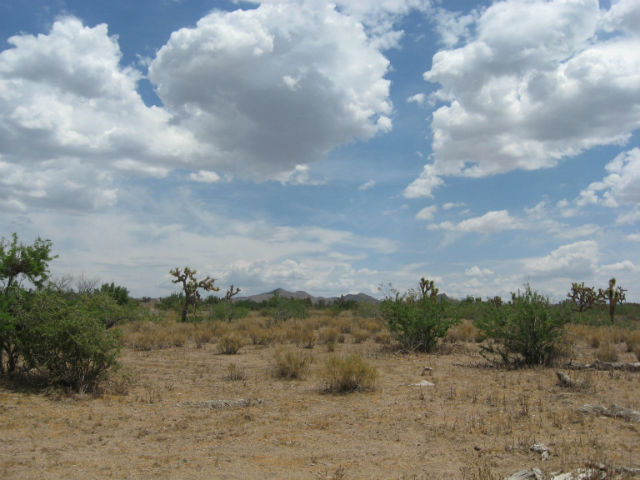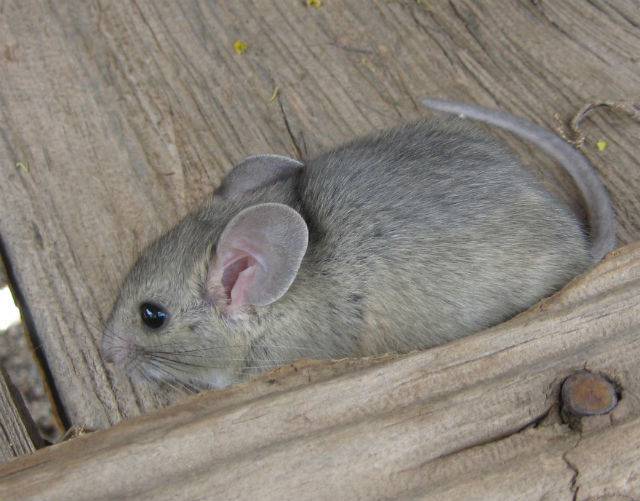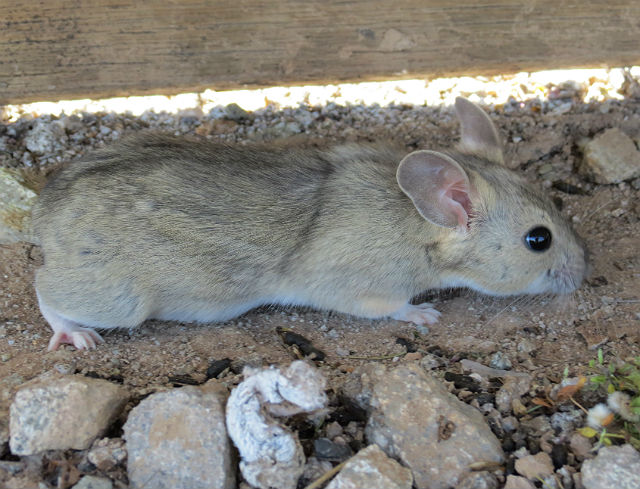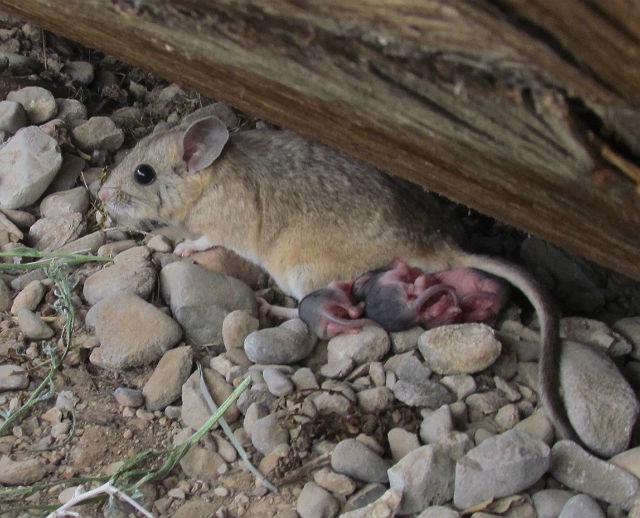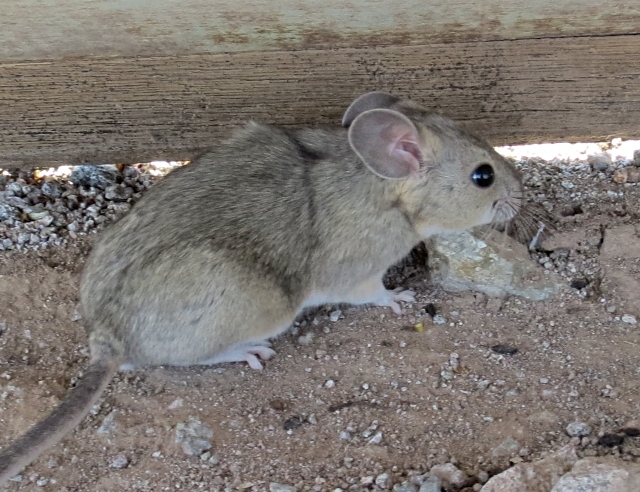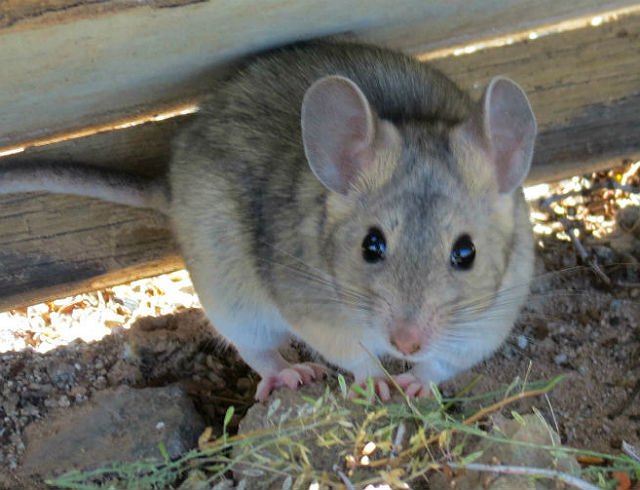While tidepooling on the Pacific Coast, we found a few of these cool and colorful creatures.
The Stout Shrimp is one of several species of shrimp with the common name “Broken Back” Shrimp, named for the sharp angle of the attachment of its tail to its body.
This crustacean’s color is highly variable, ranging from white mottling or stripes to browns and greens. It regularly occurs in the intertidal zone or along the sides of floats, where they are often the most commonly seen shrimp.
The Stout Shrimp is nocturnal and comes out at night to forage for food. During the day they can be found under seaweed, hidden around rocks or nestled among mussels.
It is mainly carnivorous, feeding on a variety of small animals. In turn, it is eaten by a variety of fish…but only if the fish can catch them. Like crayfish, these shrimp use the rapid flexing of their tail to scoot away from danger.
Although small, these fine invertebrates were a fun find while exploring California.

